4. Policy instruments for changing eating habits
This chapter provides an overview of policy instruments designed to give the right incentive to people for changing their behaviour towards healthier and more sustainable diets.
Policy instruments can generally be categorised into instruments that encourage specific behaviours among consumers and those that directly aim to influence people’s actions (Banerjee et al. 2021). In principle, most initiatives driving behavioural change are policy-driven, but as revealed in the literature review, certain approaches yield better results than others. Factors outlined in the Nordic Food Behaviour Framework such as consumer demand, the availability, affordability, and accessibility of healthy and sustainable food products, as well as sociodemographic characteristics like gender and education level, are considered essential for promoting dietary shifts.
The review in this chapter is based on existing studies of policy instruments aimed at promoting more environmentally sustainable (e.g. Ammann et al. 2022; Röös et al. 2021) and healthier diets (e.g. Livsmedelsverket 2022). Four categories of policy instruments have been identified: market-based, regulatory, nudging and information-based (Ammann et al. 2022). These instruments range from having a greater intrusiveness (market-based and regulatory) to a less intrusive character (nudging and information-based) (Banerjee et al. 2021). In brief, the four categories can be described as follows:
Market-based instruments affect food prices through taxes and subsidies, serving as effective measures to influence consumer behaviour by altering relative price structures. By introducing taxes on less sustainable and unhealthy food products while providing subsidies for environmentally friendly and nutritious alternatives, these instruments aim to incentivize consumers towards making healthier and more sustainable choices (Critchley and Unwin 2010; Culliford and Bradbury 2020; De Schutter et al. 2020).Regulatory instruments involve bans or limits and are considered the most intrusive policy measures, as they restrict the range of products available to consumers. These measures can be implemented to address specific health or environmental concerns, ensuring a controlled marketplace. While effective in directly shaping consumer choices, regulatory instruments can also spark debates regarding individual freedoms and the role of government intervention in personal decision-making (Hatløy et al. 2021).Nudging instruments comprise measures that subconsciously guide consumers toward making specific choices. These may also encompass conscious interventions such as introducing more legumes in the meals in public institutions and working with product choice architecture (i.e., the environment in which people make decisions). This includes aspects like product design, portion sizes, placement, priming, and presentation (Bucher et al. 2016; Coucke et al. 2019; de Vaan et al. 2019; Friis et al. 2017; Gynell et al. 2022).Information-based instruments encompass tools designed to enhance individuals’ knowledge, raise awareness and competence, and support consumers in changing their dietary habits. These instruments are among the least intrusive and include methods such as on-package labelling, educational interventions, information campaigns and dietary guidelines (Ammann et al. 2022; Röös et al. 2021). Information-based instruments are widely implemented due to their minimal intrusiveness and generally higher public acceptance (Banerjee et al. 2021; Macura et al. 2022). Consumer interest and the relevance of the topic to consumers are major factors influencing the effectiveness of information-based instruments (Ammann et al. 2022; Röös et al. 2021).
The next section provides an overview of the identified policy instruments broken down by category.
4.1 Market-based instruments
Fiscal measures, known as market-based instruments, are designed to influence the consumption patterns of various food products, as discussed by Röös et al. (2021). These instruments include specific taxes, subsidies, or changes in fees/charges (adjustments in VAT), strategically implemented to modify the relative prices of certain foods. The goal is to make healthier and more environmentally sustainable options more affordable compared to unhealthy choices. This approach is intended to align prices more closely with the true societal and environmental costs, as highlighted in studies by Macura et al. (2022), Perino and Schwickert (2023), Kihlberg (2021), and Säll and Gren (2015). Generally, taxes on goods and services tend to increase consumer prices, whereas subsidies have the opposite effect, leading to lower prices for consumers, a point reiterated by Röös et al. (2021).
Subsidies are financial mechanisms that should be strategically deployed to encourage positive externalities, such as biodiversity enhancement through farmland pollination or advancements in education and research, rather than to mitigate negative externalities. Negative externalities, such as carbon emissions contributing to climate change or nutrient emissions from agriculture causing eutrophication, should be addressed through ‘sticks’ (punishment)—either economic instruments like taxes and fees or legal measures including bans, tailored to the specific characteristics of the externality in question. Positive externalities, on the other hand, justify the use of subsidies ‘carrots’ (reward), as seen in the support for childcare and schools, which promote societal benefits. However, misapplication of subsidies to negative externalities, such as the substantial support given to agriculture despite its significant role in nitrogen emissions leading to water eutrophication, represents poor governance. This approach not only exacerbates the problem but also traps us in a cycle of funding compensatory actions indefinitely, as exemplified by the EU’s Common Agricultural Policy (CAP) subsidies. This dichotomy between positive and negative externalities, and the appropriate use of subsidies, is crucial for effective policy-making and governance (Indeed 2024).
Taxes on food products
The practice of taxing unhealthy products like tobacco, alcohol, or sugar is not a recent development. Traditionally, these taxes have primarily served fiscal purposes, namely generating revenue to fund public expenditures. Their use to encourage specific behaviours, such as healthy eating habits, is a relatively new development (Jensen and Smed 2017). In 2010, the Danish government increased taxes by 25 percent on a range of products based on sugar content (including ice cream, chocolate, sweets, and soft drinks) and decreased taxes on sugar-free soft drinks (Ecorys 2014, Capacci et al. 2012). In 2013, Denmark chose to abolish both the soft drink tax and the recently implemented fat tax, which had been in place from 2011 to 2012 (Capacci et al. 2012).
In recent years, a substantial number of modelling and experimental studies have been carried out to explore the impact of fiscal policies on potential consumption and health outcomes (Jensen and Smed 2017). These studies typically focus on price elasticity and consumer reactions to changes in relative prices – looking at how much the demand for product changes in response to a price change (Capacci et al. 2012). Research indicates (in combined analyses) that a 10 percent tax on sugar-sweetened beverages is associated with an average decrease in demand of 5 to 10 percent (Afshin et al. 2017; Green et al. 2013; Teng et al. 2020). This suggests that fiscal measures like taxation can be effective in reducing the consumption of unhealthy and environmentally unsustainable foods, as higher prices generally discourage the purchase of taxed items (Perino and Schwickert 2023; Säll and Gren 2015; Vellinga et al. 2022). Some researchers suggest that modest tax rates may not lead to significant changes in consumption but can generate significant tax revenues. These revenues could be used to finance alternative health and nutrition initiatives (Capacci et al. 2012).
The degree to which changes in consumption due to a food tax impacts the consumption of foods and public health improvements remains a topic of debate. Academic literature on this subject is often inconclusive and at times presents contradictory evidence (Ecorys 2014). The varied outcomes of studies on this topic are primarily due to uncertainties related to the scale of substitution effects and the challenges in precisely determining demand responses to food taxes. These challenges stem from the complexities in directly linking tax changes to shifts in prices and demand. Moreover, external factors such as the cost of raw materials also play a significant role in influencing both price and demand, adding to the complexity of these assessments. In Finland, for example, where during the reintroduction of the sweet tax, rising costs of sugar and milk were also factors affecting the prices of confectionery and ice cream (Ecorys 2014).
Regarding substitution effects, when there is a decrease in demand due to taxes, consumers might either switch to less expensive brands of the taxed product (brand substitution) or choose different, untaxed products (product substitution) (Ecorys 2014). An example of this is seen in the case of carbonated soft drinks, where taxation may prompt consumers to turn to alternatives like high-sugar energy drinks and flavoured waters, or to diet versions of the soft drinks. A potential solution to address this issue is to apply taxes or subsidies to a range of food products simultaneously, such as including substitute beverages in the taxation scheme (Smed et al. 2007).
When there are readily available alternatives that are taxed less or not taxed at all, product substitution tends to occur. A positive example of this is the Danish tax on saturated fat which resulted in decreased consumption of taxed products and an increased use of less taxed alternatives like olive oil and vegetable oil, which was the desired effect (Ecorys 2014). This tendency to substitute also depends on the consumers’ adaptability, which can differ based on various factors including age, family structure, and educational level (Jensen and Smed 2017).
A Norwegian study modelling use of taxes and subsidies concluded that this would work well for some food groups, but that a shopping leakage across borders (i.e. to Sweden with lower food prices) would reduce effectiveness of taxes and compromise food security (Abadie et al. 2016).
Research focusing on the impact of taxes on saturated fats, fibre, and sugar across different societal segments reveals that these effects are more significant among low-income groups than in other segments of the population, due to their lower price elasticity (Gren et al. 2021; Klenert et al. 2022; Smed et al. 2007). Although food taxes might lead to regressive financial impacts, disproportionately impacting poorer households, their health benefits are anticipated to be progressive. This means that lower-income families are more likely to alter their diets in response to fiscal measures (Capacci et al. 2012; Jensen and Smed 2017). Regarding age demographics, young people tend to decrease their consumption of saturated fats as prices rise, while middle-aged individuals show a higher sensitivity to price changes in their sugar consumption. This was highlighted in a simulation study examining the effects of sugar and fat taxes and fibre subsidies in Denmark (Smed et al. 2007).
The Danish Council on Climate Change recommends that the Danish Government implements a consumer tax on foods with a high carbon footprint such as meat and dairy products. This tax should reflect the climate impact of different products (Klimarådet 2021). In Norway, the introduction of cost-effective taxes on red meat was among the instruments proposed by the Norwegian Green Tax Commission in 2015 (NOU 2015). In both cases, these proposals have sparked public debate, but they have not resulted in implementation. The attempts to introduce, adapt, abolish, and reintroduce taxes as a fiscal measure in the last 30-40 years in the Nordic countries demonstrate some ambiguity. As the example from Denmark taxing saturated fat illustrates (Box 1), there are numerous representatives from the food industry, who are not convinced of the unequivocal support for taxes in promoting health benefits for citizens.
Danish tax on saturated fat
According to Jensen and Smed (2017), the saturated fat tax in Denmark met the government's revenue expectations and even led to a decrease in saturated fat consumption. However, it was abolished as part of the Danish Parliament’s 2013 fiscal budget agreement, likely due to pressure from various stakeholders in Danish society. Representatives from the food industry and nutrition researchers argued that it had a negative impact on the economy and did not positively affect health. The rationale for repealing the tax was to stimulate job creation, reduce cross-border shopping, and support the local economy (Jensen and Smed 2017).
Following the abolition of the tax, consumption levels of higher-fat products did not revert to the pre-tax levels observed before 2013. The evaluation shows that, given the tax aimed to decrease the consumption of products high in saturated fat, it appears to have been effective in achieving this goal, leading to the conclusion that the fat tax was successful (Ecorys 2014).
Box 1 Danish Example, tax on saturated fat
Internal municipal tax
A tax can also be placed internally in an organisation. In 2022, Aarhus Municipality in Denmark implemented an internal climate tax on their procurement of high CO2 emitting food items. The tax applies to beef, lamb, and ready meals containing meat as well as juice and sugar-sweetened beverages, which collectively contribute to one-third of the municipality’s food consumption-related CO2 emissions. When introduced, the tax amounted to DKK 850 per emitted ton of CO2. In 2023, it increased to DKK 1000 per ton CO2, and is scheduled to rise to DKK 1500 by 2030. The tax is levied during procurement and has a direct economic impact on the institution. Its primary goal is to influence staff behaviour by encouraging the substitution of high climate impact products with more sustainable alternatives (Aarhus municipality 2022; Bager 2022).
Subsidies on food products
Subsidies on food products result in a reduction in consumer prices. A study examining the acceptance of taxes and subsidies aimed at promoting more sustainable food consumption among Swedish consumers revealed that acceptance was significantly higher when consumers were presented with subsidies in the form of a value added tax (VAT) removal on plant-based protein, compared to a direct tax increase on meat products. Nevertheless, the level of acceptance for these policies depends on how the subsidy is funded (Lindahl 2023).
Though limited research exists on how subsidies might encourage consumers to make healthier (Capacci et al. 2012) and more environmentally friendly food choices (Röös et al. 2021), a few studies and examples are known from the Nordic Region. In a Danish intervention study, where the 20 percent VAT was removed from fruit and vegetables, a noticeable beneficial impact was found on the sale of fruit and vegetables. The revenue and sale increased by almost 25 percent (Mikkelsen et al. 2021). A survey conducted by Madkulturen in Denmark in 2019 supports this finding, as the surveyed group report that a decrease in vegetable prices would be necessary to boost their consumption (Madkulturen 2019). In Norway, a market-driven price reduction campaign on fish by supermarket chains in the autumn of 2023 has shown a marked increase in actual fish consumption (NRK 2023). These examples indicate that subsidies contribute to increased sales and consumption of the food items Nordic citizens should consume more of. How it affects the diet overall and how it affects sale of other food items need to be further explored.
Typically, interventions via policy instruments that promote healthy behaviours are found to have a greater impact than those aimed at stopping unhealthy behaviours (Afshin et al. 2017). Research indicates that consumers are more responsive to positive incentives such as subsidies (Afshin et al. 2017; Lindahl 2023). In combined analyses, a 10% reduction in prices (i.e., subsidies) led to a 12 percent increase in the consumption of healthy foods, outperforming the results achieved by price increases (i.e., taxes) on unhealthy products. Afshin et al. (2017) conclude in their study that the application of subsidies, particularly when part of comprehensive, multi-component strategies (i.e. including tailored combinations of taxes and subsidies on particular food items) is an effective method for increasing the consumption of healthy foods. It is important to note that the most suitable and cost-effective policy instrument depends on the problem to be solved. Making comparisons, such as evaluating transaction costs, effectiveness, distributional effects, and so on, is essential to determine which policy instrument is the most cost-effective choice.
A possibility could be implementing a bonus-malus system that adjusts VAT according to the environmental footprint of various products (Röös et al. 2021: 31). This approach would entail imposing higher VAT on animal-based food products and those sourced from tropical, deforested areas, while reducing VAT on fruits and vegetables originating from the Nordic countries and Europe. Another proposal involves applying lower VAT on Keyhole-labelled food and higher VAT on other foods, thus providing an economic reward for selecting more sustainable and healthier options and imposing an economic penalty for less sustainable choices.
Subsidies for companies and organisations
Subsidies may be directed towards companies and organisations to support innovation and development in the food sector. In Denmark, a national fund has been established to support projects that spur development in the plant-based food sector, known as ‘The Fund for Plant-Based Food’ (Plantefonden). Placed under the Danish Agricultural Agency, DKK 675 million has been allocated toward 2030. In 2023, the fund’s focus is on increasing the demand for plant-based foods, hence prioritizing projects that contribute to a more plant-based food culture. Three concrete target areas are outlined: 1) increasing the share of plant-based food in public and private canteens and food services, 2) increasing Danish private consumption of plant-based food, and 3) boosting demand for Danish plant-based food abroad. Initiatives that can be funded include upskilling of kitchen staff, development of educational materials for schools, public kitchens, etc., as well as campaigns and nudging strategies in retail (Landbrugsstyrelsen 2023).
4.2 Regulatory instruments
The second category of policy instruments comprises regulatory measures including laws and regulations, often also referred to as administrative or legal instruments. These can include bans or limitation, regulating in-store availability, marketing strategies, and setting criteria for food served in public institutions through procurement policies or by introducing rationing systems for certain items. It may also encompass partnership agreements with public and private actors working in the food industry (see box 2). Through these means, governments can influence the decision-making of consumers and other actors in the food system (Macura et al. 2022).
Regulatory strategies and measures have proven effective in various instances. For example, they have been instrumental in reducing the levels of unhealthy fats in Danish food (Leth et al. 2006) and prohibiting the sale of alcohol and energy drinks to minors (Gorski and Roberto 2015).
However, these instruments are often considered the most intrusive, as they limit the availability of products to consumers (Ammann et al. 2023). The direct intrusiveness of regulatory instruments on citizens can vary widely, from regulating packaging and portion sizes to outright bans on specific items. Generally, regulatory policy instruments are less socially accepted compared to less intrusive methods, such as information campaigns. This lower acceptance is likely due to their impact on individual freedom of choice. Notably, regulations that target children’s access to unhealthy food and beverages tend to be more widely accepted (Kwon et al. 2019, as cited in Röös et al. 2021: 35).
Governments have at their disposal a range of regulations and requirements to manage the availability and accessibility of unhealthy and unsustainable food products. These include regulating in-store availability, marketing strategies, and setting criteria for food served in public institutions through procurement policies or by introducing rationing systems for certain items. It may also encompass partnership agreements with public and private actors working in the food industry (see box 2).
A regulatory approach to partnership agreements
A Norwegian example of a regulatory approach towards food-related determinants is the partnership for healthier foods instituted by the Norwegian government. In this cooperation agreement between the Health Authorities and the food industry, the food industry cooperates with the Government to facilitate a healthier diet through reformulation of food products and promotion of healthier foods (Helsedirektoratet 2019).
Box 2 An example of a regulatory approach.
For this report, we focus on three types of regulatory policy instruments:
- regulation of consumer choice
- regulation of marketing
- new types of regulatory instruments (e.g. public procurement).
Some of these instruments are already in use within the food sector, while others represent potential regulatory measures adapted from other sectors.
Regulation of consumer choice
Regulatory instruments designed to influence consumer choices in food purchasing include initiatives to reduce packaging or portion sizes of food products, aiming e.g. to curb the consumption of unhealthy or unsustainable food. Regulations also dictate the placement of food items within stores, such as restricting the display of unhealthy products near checkout counters or controlling the availability of products high in sugar, salt, saturated fat, and those with significant environmental impacts.
An illustration of regulated consumer choices in the Nordic region relates to the sale of alcoholic beverages. In most Nordic countries, except for Denmark, alcohol sales are managed through government monopoly systems. Beverages with alcohol content above a certain threshold are sold exclusively in specific stores with restricted operating hours. To date, there are no similar systems in the Nordic countries that limit the availability of unhealthy or unsustainable food in a similar manner.
Regulation of marketing
Regulatory measures can impose restrictions on the marketing and advertising of specific food and beverage categories. While the Nordic countries enforce marketing restrictions on tobacco, similar controls on the use of public funds for advertising particular food groups could also be explored. In the EU countries, national and EU funds are annually designated to promote various types of food, with the animal-based food sector receiving a substantially larger allocation than the plant-based sector. In Denmark, for instance, approximately DKK 25 million from national funds were directed to the animal-based sector, in contrast to around DKK 5 million for the plant-based sector in 2021 (Klimarådet 2021:56). The Danish Council on Climate Change has criticized such campaigns for animal-based foods, arguing that they are at odds with the national dietary guidelines and the objective of transitioning to more sustainable diets.
In Norway, various food industries such as meat and eggs, dairy, fruits and vegetables, bread and cereals, and seafood, are supported by information offices funded by the industry itself. These offices are dedicated to offering factual information that promotes their specific food groups, along with providing recipes and other related content. Considering the goal of encouraging shifts towards more sustainable and healthier diets, a reassessment of how public funds are allocated for the promotion of certain foods might prove beneficial.
Regulation of public procurement and food served in public kitchens
The public sector can significantly impact as a role model and pioneer in changing food-related behaviours (Reisch et al. 2017; Röös et al. 2021). This role involves acquainting people with new tastes and flavours, dispelling prejudices associated with consuming sustainable food, and providing inspiration and knowledge for preparing sustainable meals at home. Public kitchens are particularly vital as a large segment of the population occasionally dines in these establishments (Klimarådet 2021). In Finland, the impact of public food service is particularly notable. All children are entitled to a free school meal daily and a subsidized meal in kindergarten (Finnish National Agency for Education 2024). Additionally, approximately half of the workforce has access to subsidized lunches at worksite canteens.
Organic conversion in food environments, such as a canteen at a workplace, is feasible with proper planning, monitoring, education, information and communication, stakeholder involvement, and experience sharing (Mikkelsen et al. 2020). Several Nordic cities have introduced various strategies and regulations to increase the consumption of sustainable and healthy foods (see box 3).
Past experiences in transforming public meals indicate that it is crucial to combine regulatory instruments with other instruments (Mikkelsen et al. 2021). Efforts include education and upskilling of kitchen staff and public procurers, support from local politicians for sustainable food in public kitchens attention to rhetorical and aesthetic aspects of meal presentation (Attwood et al. 2020) and communication efforts to explain the reasons behind meal changes (Röös et al. 2021).
Among market-level policies, those regulating school environments are most common. An example at the EU level is the EU School Fruit Scheme introduced in 2009, with the European Commission subsidizing the provision of free fruits and vegetables in schools. Regulatory measures impacting meals show a positive effect on behaviour, typically in the short term. However, evaluations are often limited, focusing solely on behavioural changes at the intervention site (e.g., vending machine sales in schools) and overlooking any compensatory behaviours that might occur outside the school environment (Capacci et al. 2012).
Copenhagen
In 2019, Copenhagen Municipality launched a food strategy aimed at reducing the climate impact of public meals by 25 percent from 2018 to 2025, while ensuring that these meals remain healthy and nutritious. This strategy builds on previous efforts to increase organic food in public kitchens. Key aspects of their approach include motivating and educating kitchen staff to prepare sustainable, healthy, and tasty meals, developing recipes for public kitchens, and establishing guidelines for menu planning (Klimarådet 2021; Lassen et al. 2021).
The Danish Council on Climate Change has proposed that public kitchens should adhere to the national dietary guidelines. This would help mitigate climate impact, ensure the provision of healthy meals, and aid in normalising a more sustainable diet. They suggest that if the primary goal of public kitchens is to serve more sustainable food, the national dietary guidelines should be used as they also guarantee healthy and nutritious food, an aspect not covered by sustainable food evaluation based on Life Cycle Assessment (LCA) analysis (ibid).
Oslo
In 2022, Oslo’s local government introduced regulations stating that all meals served at public events should be vegetarian by default, as part of a broader sustainability strategy (Oslo Kommune 2024). Meals served in public institutions are required to follow official nutrition guidelines and be predominantly plant-based (Oslo Kommune 2023). These regulations form part of Oslo’s strategy to reduce climate gas emissions by 95 percent by 2030 (Oslo kommune 2024).
Box 4 Two Nordic examples
Menu restrictions are proposed as another regulatory instrument that public kitchens can introduce (Röös et al. 2021). Such restrictions could focus on replacing entire meals (for example, with vegetarian alternatives) or changing the quantities of food ingredients with a high climate impact in the existing recipes (for example, replacing a portion of the meat with pulses and legumes). In such cases, communication efforts and attention to rhetorical aspects are important, as changes in public meals have shown to be sensitive and contested.
New types of regulatory Instruments
One potential regulatory instrument that could be considered is a rationing system for meat consumption, inspired by the emissions trading system (Röös et al. 2021). This system would set limits on the amount of meat sold or consumed, aiming to reduce environmental impact and promote public health. Currently, rationing is not employed as a policy instrument in the Nordic countries and is primarily associated with situations such as wartime or food shortages within this region.
Another potential instrument involves the gradual increase of sustainability requirements for food sold in the retail sector. This could be achieved through methods like targeted advertising, in-store displays, choice editing, pricing adjustments, and enforcement of more stringent regulations regarding the sourcing, packaging, and distribution of food items. Retailers might be required to procure a higher percentage of their products from sustainable and ethical suppliers, reduce the use of non-recyclable packaging materials, or implement energy-efficient practices in their operations. These requirements would not only encourage more environmentally friendly practices in the retail sector but also raise consumer awareness and demand for sustainable products. Consequently, this could result in broader shifts in consumer behaviour and market dynamics. Both regulatory approaches would necessitate collaboration and dialogue with stakeholders in the private sector to ensure feasibility and effectiveness, while also balancing economic and environmental considerations (European Commission 2020b).
4.3 Nudging
Nudging instruments encompass a wide range of strategies aimed at subtly influencing behaviour to achieve specific objectives, such as promoting healthier or more sustainable lifestyles. Studies indicate that over half of the decisions consumers make about grocery purchases are spontaneous and are made in the store. This makes customers vulnerable to environmental factors that often lead to less healthy food consumption. For instance, restaurants offering large portion sizes can subtly shift consumption norms towards overeating. Similarly, supermarkets strategically placing sugary drinks at prominent end cap locations and candies in checkout aisles increase the visibility and temptation of these items, thereby boosting impulse buys (Gorski and Roberto 2015).
Nudging instruments, which is an informative type of policy instrument, can be effective tools to address these challenges. These instruments draw upon insights into human behaviour to design scenarios that encourage specific actions, either consciously or unconsciously (Karevold et al 2017; Röös et al. 2022). Nudging instruments can be used in different settings as for example in supermarkets and restaurants. One prevalent nudging tool in restaurants is the use of a “default choice” such as designating a vegetarian dish as the “lunch special”. Many restaurants tend to opt for this selection, eliminating the need for an active decision-making process. Other commonly employed nudging techniques include altering the sequence in which dishes appear on the menu and on the buffet line or reducing plate sizes to minimize food waste. In supermarkets, strategically placing products can effectively steer consumer behaviour towards healthier and more eco-friendly choices. Many public institutions and canteens, such as those in the City of Oslo (see box 4), incorporate vegetarian meal alternatives into their practices.
Conscious nudging strategies also exist, directly appealing to consumers’ values and offering feedback to reinforce environmentally sustainable consumption habits. Several supermarkets and food retailers have, as part of their sustainability strategy, implemented rewards for consumers who make environmentally sustainable and healthy food choices. One example is the initiative “Mitt klimatmål” by the Swedish grocery store ICA rewards customers for making more eco-friendly choices (Röös et al. 2021).
There is growing empirical evidence suggesting that nudges and choice architecture, which involve structuring the presentation of choices to influence decision-making, have substantial potential for positive environmental and health-related impacts, and they can be both effective and cost-efficient (Reisch et al. 2021). Furthermore, nudges are becoming a popular option for policymakers, largely because of their widespread public acceptance, especially as there is increasing pressure to act (Sunstein and Reisch 2019). For an illustration of nudging strategies see box 5.
- Priming: Visual or spatial cues, such as store design and signs in shops, are used to guide consumer choices effectively.
- Micro-environment changes: Altering the arrangement of products on supermarket shelves or website choices is a subtle yet impactful strategy.
- Defaults: Implementing “meatless days” in public canteens offers a predetermined choice for consumers.
- Warnings: Coloured carbon labels on meat products aim to inform consumers about potential health or environmental impacts.
- Simplification: Making vegetarian menu choices easily accessible contributes to nudging consumers towards healthier options.
- Disclosure strategies: Revealing environmental costs associated with meat consumption on a menu provides transparency for informed decision-making
- Social norms: Emphasizing what the majority of people are doing or eating serves as a powerful influence on consumer behaviour.
Box 5 Examples of nudging strategies.
Source: Reisch et al. (2021)
4.4 Information-based instruments
Various policy instruments are designed to enhance individual consumer knowledge, raise awareness, and encourage consumers to modify their habits, attitudes, and behaviour. Common information-based instruments include the use of labels that can inform about nutritional or sustainability aspects of a food item, product or meal, information campaigns, dietary guidelines which inform consumers about healthy dietary choices, and various types of educational efforts that provide consumers or professionals with new skills and competencies.
Labelling
On-package labels is intended as an easy way to provide consumers with knowledge about a certain product. It can inform about nutritional aspects, for example, percentage of whole grains and the content of salt, sugar and saturated fat. Additionally, they may convey sustainability aspects of a food item, such as whether it is organic or contributes to a more fair and just food trade system. The use of labels is well-known and implemented in the Nordic countries (see figure 7 for some examples of implemented labels). Labels can also be applied in public kitchens, restaurants, or canteens to indicate for example the degree of organic food used to prepare the meals. Different categories of labels exist which aim to inform consumers of different aspects of a food item:
- Health-related labels: Health-related labels inform consumers about nutritional aspects of a food item as content of healthy (as whole-grain) or unhealthy (fat, sugar or salt) ingredients. Research and analyses have shown that health-related labels in many cases positively influence consumer behaviour by signalling that the product is a better choice within its category (Röös et al. 2021; Shanguan et al. 2018). A good example in the Nordics is the Keyhole label that helps guide consumers towards more healthy food products within the respective food categories, and is used in Sweden, Norway, Denmark, and Iceland. In Finland, in addition to Heart Symbol used in food products, there is a Heart Symbol
in meals served outside home that helps consumers to make better choices.
One example of the health-related label is the Nordic Keyhole food label that is designed to guide consumers towards healthier food choices in all the Nordic countries (see figure 6). This voluntary easily recognisable label highlights food products that meet specific criteria within different food groups for lower fat, sugar, and salt content, while being higher in fibre and whole grains.

Figure 6 Nordic Keyhole label
- Eco and sustainability labels: Eco-labelling assists consumers in choosing a more environmentally friendly option within a given product category. While eco-labels may have benefits for environment, their primary focus is thus not on encouraging consumers to reduce their consumption of high-climate impact products, such as meat (Röös et al. 2021). Examples include Aquaculture Stewardship Council (ASC), EU organic label and the Swedish KRAV label. Climate labels may be more effectual in this sense, as they disclose a food product’s CO2 footprint. Voluntary climate labelling initiatives exist in several Nordic countries, but there are currently no official climate labels. Some companies are stating the climate impact of their products on the packaging; however, they are not following any national guidelines or standards for how it is calculated.
KRAV -a label for organic food in Sweden | Norwegian organic label | The national Danish organic ø-logo | Certified organic in Iceland | European organic certification label |
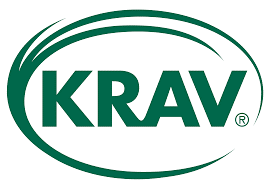 | 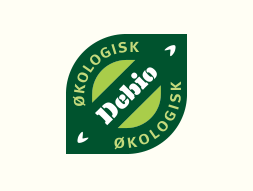 | 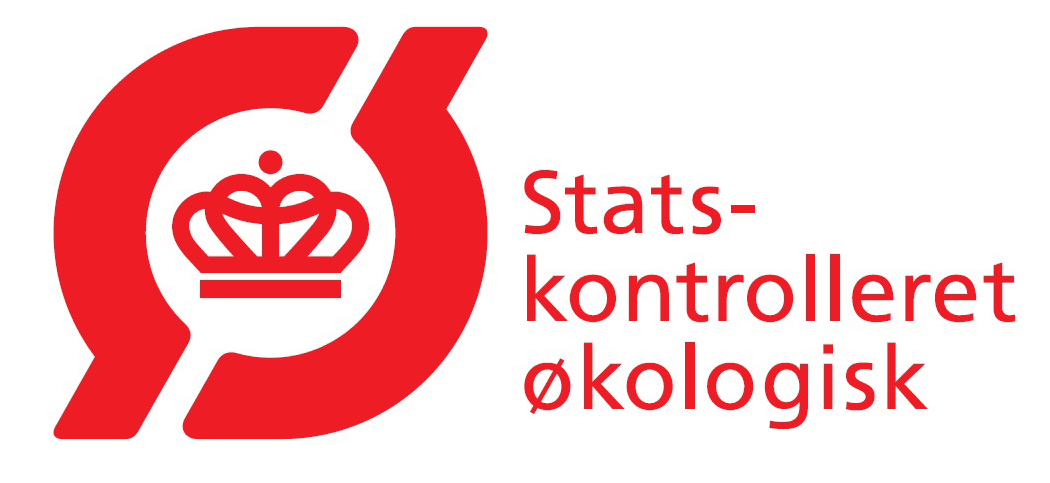 | 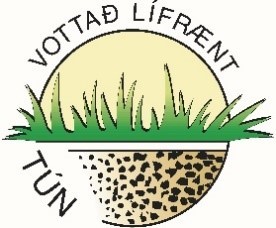 |  |
Figure 7 Examples of organic labels in the Nordic countries and the EU.
In 2022, the Danish government decided to develop a state-governed climate label to help consumers make more sustainable choices, and to push food production in a more sustainable direction. In 2023, an expert group delivered their recommendations to the government for how such a label should be developed and implemented (Danish Veterinary and Food Administration 2023). They recommend a traffic light label (see suggested design in figure 8) and a publicly available database containing the climate impact of all food items, which provide the foundation of the labelling.
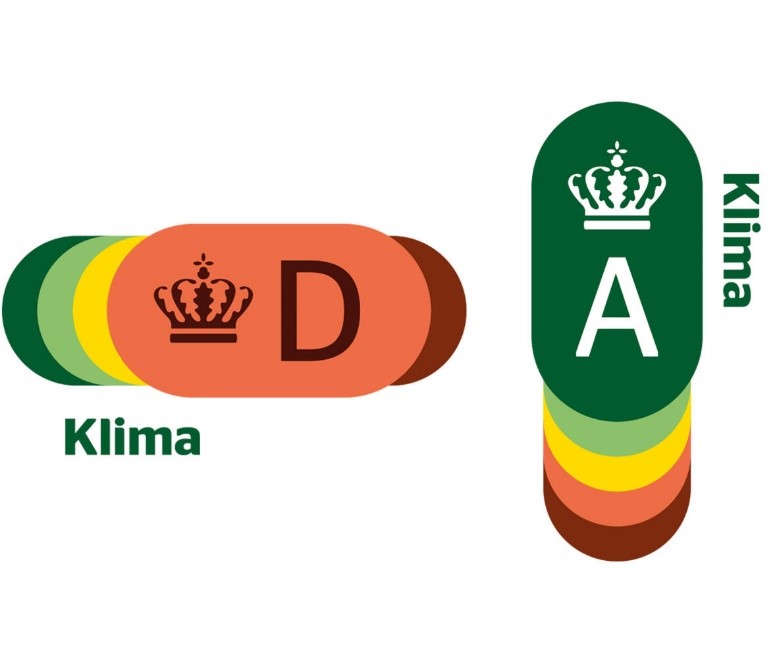
Figure 8 A suggested design of the state-governed climate label in Denmark.
Outside the Nordic region, some countries apply negative labelling to highlight attributes like sugar, unhealthy fats, salt, and caloric content. Finland has implemented a high-salt warning label. This warning guides both consumers and product developers by establishing a specific threshold for each category. Similarly, in the Nordic countries, tobacco products are required to feature warning labels that include both an illustration and text informing users of the health risks.
To enhance label effectiveness, they should be considered in conjunction with other interventions. While nutritional labels have, in some cases, resulted in unintended behaviours such as increased food consumption and overall energy intake (Oostenbach et al. 2019), they generally have a positive impact on consumers’ dietary habits (Röös et al. 2021; Shanguan et al. 2018). For instance, the keyhole label has demonstrated the ability to steer consumers towards healthier choices and stimulate product development (Hedengren and Wassenius 2015; Röös et al. 2021).
Moreover, labels play a crucial role in helping consumers make more sustainable choices, with traffic light labels demonstrating a positive impact on consumers’ understanding of sustainability (Osman and Thornton 2019; Ponzone et al. 2020). However, recognizing that individuals opting for food products with nutritional labels are often more health-conscious, attributing improved eating habits solely to label use is evidently incorrect (Capacci et al. 2012).
Information efforts
Information campaigns are used to make people more aware and knowledgeable with the purpose to influence people’s food behaviour through increased knowledge. Their impact is amplified when they are consistently reiterated and when complemented by other actions. While these measures are relatively easy to implement and the public acceptance is generally high, their effectiveness still tends to be limited as stand-alone activities. Nevertheless, these measures are important for expanding the public’s knowledge base, altering attitudes, and support the changing of norms. These campaigns have also been noted for bolstering public acceptance of other more intrusive measures such as taxes (Röös et al. 2021).
One example is the Finnish information campaign “Meatless October”, a grassroots social media campaign aimed at reducing meat consumption. The evaluation of this campaign found that participants were often strongly motivated by the campaign’s sustainability frame. In their daily lives, participants’ primary focus and concern revolved around the ability to prepare tasty and healthy vegetarian foods, and they were pleasantly surprised by their newfound ability to acquire these skills. Overall, the study suggests that the campaign’s public context facilitated change in private practices by encouraging an experimenting process (Pohjolainen and Jokinen 2020).
Food-based dietary guidelines are an important information-based tool from the national authorities in all the Nordic countries. These guidelines inform consumers and professionals on how to compose nutritious and healthy diets, with some now including environmental aspects.
The political landscape regarding dietary guidelines in the Nordic countries is currently diverse. Finland incorporated an environmental perspective into its food-based dietary guidelines as early as 2014, while Denmark introduced dietary guidelines that include environmental considerations in 2019 (see figure 9). Both Norway and Sweden are currently in the process of developing new national dietary guidelines. In many Nordic countries, the NNR2023 has sparked debate on several levels, and between different stakeholders and actors.
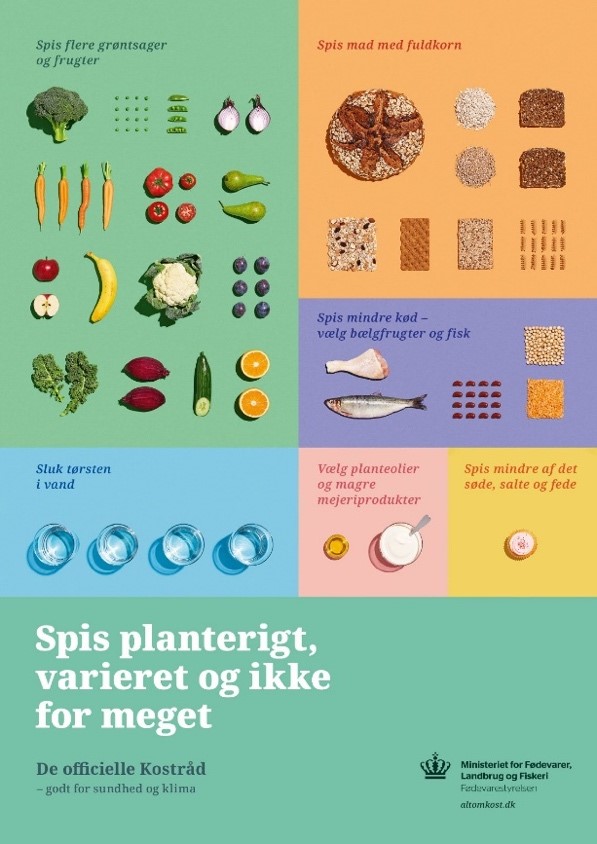
Figure 9 Official dietary guidelines from the Ministry of Food, Agriculture and Fisheries in Denmark.
Food education plays a crucial role in promoting sustainable and healthy eating habits. In Finland, this is exemplified by its integration into the National Core Curriculum for Early Childhood Education and Care. Educational efforts extend beyond merely providing information, but also include development of skills and competencies to produce more sustainable and healthy meals. Targeting educators, chefs in public kitchens, and consumers alike, these initiatives often focus on practical skills and action- based learning. A notable example of such a program in Finland is ‘Tasty School,’ which serves as an inspiring model for food education.
School meals, for example, can have a long-lasting impact on food choices, not just for students but also potentially for their parents. Röös and co-authors present a series of initiatives implemented throughout Sweden, such as the SmartMat Hbg in Helsingborg, training school chefs in vegetarian cooking. Other programs like Hej Skolmat, Maträtt, and Bonden I skolan, aim to increase understanding of food production and its environmental impact. Schools even involve students in gardening projects, thereby encouraging a more hands-on relationship with food (Röös et al. 2021). Education efforts and consumer guides can contribute to the normalization of a healthier and more sustainable diet, and help the population change their eating habits (Klimarådet 2021:41). Some NGOs work on these types of efforts and provide recipes to cook more sustainable food in private kitchens.
Climate friendly recipes from Concito https://concito.dk/files/media/document/SoMa_opskrifth%C3%A6fte_F%C3%86RDIG%202.pdf